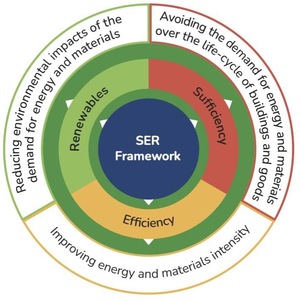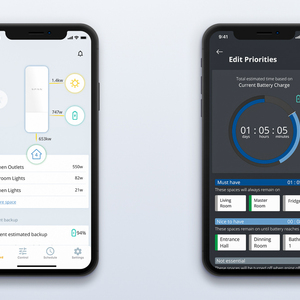
When planning an electrification project, we need to be sure that the home’s electric service can handle the added loads. The National Electrical Code (NEC) provides two methods to make this determination.
The first method
As described in NEC 220.83, this is essentially a clipboard survey. Key inputs include:
- The square footage of finished space, which is used to estimate the power needed for lighting and plug loads
- The number of small appliance and laundry branch circuits
- The power ratings of fixed appliances like electric ranges, clothes dryers, and water heaters
- The power ratings of heating and cooling equipment.
Only loads that will be present after the retrofit are counted; if I’m replacing a natural gas furnace with a heat pump, I need to include the heat pump but not the furnace in my calculations. An adjustment factor is applied to account for the fact that not all electric loads in the home operate simultaneously.
In an earlier article, I took readers step-by-step through NEC 220.83. This method has several advantages: The data can be collected in a single visit. The only tools needed are a measuring tape and flashlight. And the result—a worksheet showing the required service size in amperes—is familiar to code officials, who review similar calculations for new homes.
But NEC 220.83 also has a downside. In April 2023, I attended a talk at the National Home Performance Conference by Iain Walker and Brennan Less, both of Lawrence Berkeley National Laboratory. They shared data suggesting that this method can overestimate a home’s power needs, sometimes triggering a service upgrade when one is not needed.
The second method
With this approach, described in NEC 220.87, instead of tallying loads and applying a standard adjustment factor, we measure the home’s maximum short-term power use, or demand. If the…
Weekly Newsletter
Get building science and energy efficiency advice, plus special offers, in your inbox.

This article is only available to GBA Prime Members
Sign up for a free trial and get instant access to this article as well as GBA’s complete library of premium articles and construction details.
Start Free TrialAlready a member? Log in















6 Comments
You should keep lobbying for that smart meter data. I can log in to my account with our service provider and generate charts of electric useage over a range of dates and times. What reason would there be to keep that information from the customer? You are paying for it.
I really hope that can happen soon in my area--I think so many people would benefit from having access to this info. I do like the circuit-by-circuit data I get from the Emporia, but I agree that the whole-house data at time scales down to 15 minutes or less should be available to all customers at no extra charge.
I agree. As an energy auditor, I can request historical usage data for a customer I'm working for. I believe the newer meters that the rural electricity provider I work has can get me data down to 1-minute intervals. Should be easy for them to get 15-minute demand data.
Nice article Jon!
Thank you for this informative article!
I wonder about the caveat that "Homes with renewable energy systems can’t take advantage of the 30-day exception." If you measured whole-home demand net of PV (or other) generation, this would seem to be a non-issue ... and that could be readily done using the 15-minute interval data provided by many PV inverters or if the Emporia Vue also monitored PV generation. Or, perhaps there are other factors at work?
Great article. I also came to do this 30-day load study using the emporia energy monitor. With 100A service, our peak load +125% was around 45A - I forget exactly but it involved the dryer, water heater and/or the oven running together.
We want to add an induction cooktop (currently gas) and a 30-40A EV charger. The cooktop has a peak load of nearly 50A itself, although that would be a rare use. The load study method means that we could add the EV charger, set the car to only charge after midnight, and likely have no change in the results of our load study - it would still be 45A. Then we could go and add the induction range as we still have room for the 50A additional. Seems funky but that's the code. I'd guess a load study with the EV charger and Induction cooktop installed would come in the ballpark of 70A at most, despite adding 90A of rated load to the existing 45A peak load.
We will likely get a heat pump dryer at some point. But our water heater is in a bedroom closet so it's unlikely we'll ever switch to heat pump there (notwithstanding the recent federal requirements that essentially mandate them by 2027. We would be forced to buy a hybrid and run it exclusively in resistive mode at that point)
Investigating the service upgrade process has been challenging as well when we looked at going to a 200A service. The utility was not able to tell us how far we would have to excavate to replace our 50 year old direct burial underground service wire - whether it would be just to our property line or also down and across the street to the transformer. We'd have to start excavating to find out, or at least do pot holing which requires use of a singular utility approved contractor, which I assume is $$. Then our electrician gave us contradictory and incorrect information that significantly delayed things - we still haven't done the project a year later.
Our utility said our existing wiring to the meter is probably good for 125A. We can likely get by with that, or even the current 100A service. You can still use a larger '200A' panel, you just have to install a 100A or 125A main breaker, and follow the load study requirements per code when adding new loads.
I like the smart load management devices instead of the flip devices. Emporia makes one, So does EVDuty. Instead of turning off one appliance completely when you need charge your vehicle it looks at your whole load and just uses what capacity remains, adjusting dynamically. This way you can have a 40amp EV charger on a 40 amp panel.
We've been a one car EV family for about 6 years now. It is rare to need it, but sometimes it is really helpfull to punch 7 or 8 kw into the battery before you go, like when I forget the car was low when I parked it the previous night. For most overnight charging though a 15A charge rate is more than enough.
Log in or become a member to post a comment.
Sign up Log in